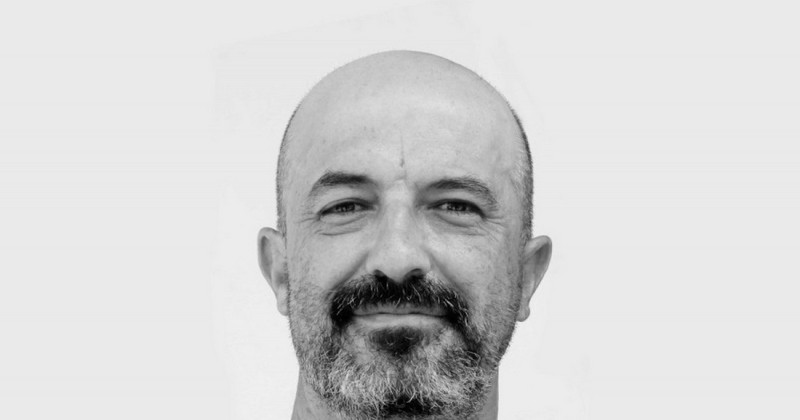Álvaro Ruiz de Ocenda: Mindfulness as a resource in the face of discomfort

We interviewed psychologist Álvaro Ruiz de Ocenda, an expert in Mindfulness.
The resources that psychologists use in psychotherapy are part of the development of different techniques and technologies developed scientifically over the last decades, but that does not mean that these advances have come out of nowhere. We have an example of this in the case of Mindfulness.
Mindfulness practices, a term also translated as Mindfulness, are becoming increasingly common among the range of forms of intervention of psychologists; but its historical roots are thousands of years old. To learn more about this phenomenon of consciousness and the management of the attentional focus, we spoke with an expert on this subject, psychologist Álvaro Ruiz de Ocenda, from the Psikon therapy center of the University of Barcelona.of the Psikonet therapy center.
Interview with Álvaro Ruiz de Ocenda: the therapeutic potential of Mindfulness
Álvaro Ruiz de Ocenda is a General Health Psychologist based in Viroria-Gasteiz and with a professional career of more than two decades attending patients. He is also an expert in Mindfulness both as a therapist and as a teacher; he is currently conducting research on the effect of Mindfulness programs in cases of chronic pain.
Throughout this interview, Alvaro talks about the aspects of Mindfulness that make it a useful resource in psychotherapy.
What is Mindfulness?
Mindfulness is the translation of the Hindi word pali satiand means awareness, attention and remembrance. Mindfulness teaches people to pay attention to their inner and outer world with curiosity, kindness and non-judgment.
Based on this definition, a great variety of programs and intervention techniques based on Mindfulness have been created and are having really promising results.
Why is Mindfulness considered to have therapeutic potential, since it is inspired by a religious practice?
Mindfulness comes from the Theravada school, which is one of the schools of Buddhism, although I have doubts as to whether it is really a religious practice... in the words of the Dalai Lama, Buddhist teachings are not a religion, they are a science of the mind.
Mindfulness shares with Buddhism its reading of human suffering, causes and solutions. Thus, in addressing human suffering, mindfulness training has been found to be one of the most effective ways and through acceptance and other techniques and strategies, people learn to cultivate a happier life.
Specifically, meditation is one of the most powerful techniques for paying attention to various aspects of the present experience: we can bring our attention to our breathing, to our bodily sensations, and we can also bring our attention to those thoughts that come to our mind again and again. In this way, we can calm the mind so that we can see reality more clearly.
For example, what are the benefits of Mindfulness for people suffering from excessive stress or anxiety?
In the case of stress and anxiety, the goal of Mindfulness programs is not to fight stress, nor to make it go away, but rather to develop awareness of the present moment as a way to bring attention to what is happening here and now.
Faced with the rumination of stressful thoughts, or the anticipation of various scenes that we can imagine in our future, bringing our attention to what is happening in the present moment produces an important sense of relief.
As each person begins to have this sense of connection with the present, we realize that what really traps us are not so much stressful situations, but the thoughts we create about them. And here Mindfulness is really powerful, leaving us room for choice.
And someone experiencing insomnia or emotional fatigue can also do well?
In the case of insomnia, more and more studies show that Mindfulness-based approaches are more effective than those based on other psychological models and even medication.
In Mindfulness-based programs for Insomnia, the double objective of introducing modifications in sleeping habits is addressed, but also the discomfort created during the rest of the day by not having rested. And here again, thought management becomes central, through various meditation practices, journaling and homework, sleep-related anxiety is greatly reduced and the quality and quantity of sleep improves.
Emotional fatigue is a very broad term, in which different pathologies or affections can be grouped together... It would be necessary to analyze what this term means in each person who expresses it, since sometimes there are moments in life in which existential or vital crises, ambivalence of feelings... appear. In this sense, being guided by a skilled therapist can be crucial to propose different itineraries to follow.
Once the therapy session is over, do patients follow guidelines to learn to use Mindfulness autonomously, in their daily life?
In general, in Mindfulness-based interventions the responsibility is usually shared between the professional and the client or patient... it is the therapist's task to carry out the program, to be trained and accredited by an entity that belongs to the Network of Standardized Mindfulness Programs in Spain, to demonstrate professionalism and closeness, but there is a part of the path that the person who attends these programs/therapies has to walk.
To do this, it provides audios with guided meditations, student manual, and a multitude of online resources for each one to be the protagonist of his or her path of mindfulness.
Beyond the professional field, has Mindfulness contributed something to you personally?
In my particular case I approached Mindfulness as a way to manage my stress, and its discovery was so revealing that I decided to train and train professionally to bring it to the people with whom I work in therapy and teaching courses. In fact I continue to train myself, and at the moment I am doing research on Mindfulness and chronic Pain for my PhD in Psychology.
(Updated at Apr 14 / 2024)